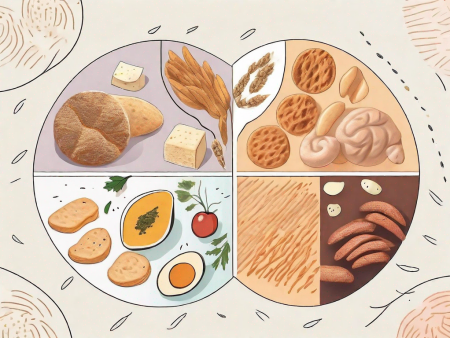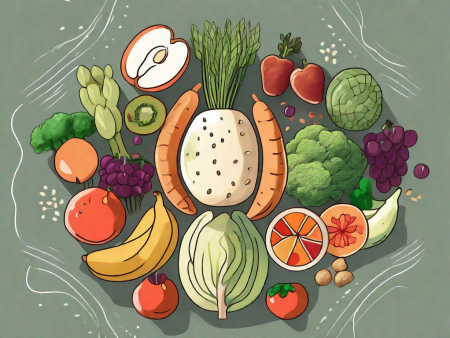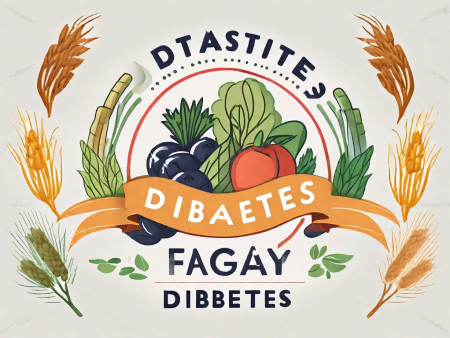Discover the potential benefits of adopting a low-carb diet for managing chronic pain.
Exploring the Benefits of Low-Carb Diet for Chronic Pain
If you’re someone who experiences chronic pain, you probably understand firsthand how it can affect your daily life. From constant discomfort to limitations on physical activities, chronic pain can be incredibly challenging to manage. Thankfully, there are various approaches to pain management, and one that has gained recent attention is the low-carb diet. In this article, we’ll dive into the world of chronic pain and explore how a low-carb diet may offer a glimmer of hope for those seeking relief.
Understanding Chronic Pain

Chronic pain is not just a passing inconvenience; it’s a complex condition that affects millions of people worldwide. To comprehend how a low-carb diet can potentially help, it’s essential to have a basic understanding of chronic pain and its underlying mechanisms.
Chronic pain is a debilitating condition that can have a profound impact on a person’s quality of life. It is defined as pain that persists for more than three months, even after the initial injury or illness has healed. Unlike acute pain, which serves as a warning sign for tissue damage, chronic pain serves no protective purpose and can become a disease in itself.
The Science Behind Chronic Pain
At its core, chronic pain is a result of persistent activation of the nervous system. Whether it’s due to an injury, illness, or an underlying condition, chronic pain can lead to a hypersensitive nervous system that continues to transmit pain signals long after the initial cause has healed.
When an injury occurs, specialized nerve cells called nociceptors detect harmful stimuli and send electrical signals to the brain, signaling pain. In a healthy individual, once the injury heals, the nociceptors stop firing, and the pain subsides. However, in chronic pain sufferers, the nociceptors remain active, sending continuous pain signals to the brain.
This persistent activation of the nervous system can lead to a phenomenon called central sensitization. In central sensitization, the neurons in the spinal cord and brain become more responsive to pain signals, amplifying the perception of pain. This heightened sensitivity can cause even mild stimuli to be perceived as excruciatingly painful.
Common Causes of Chronic Pain
Chronic pain can manifest in various forms, including back pain, migraines, fibromyalgia, and arthritis, among others. While the specific causes may vary, inflammation often plays a significant role in perpetuating the pain cycle.
Inflammation is the body’s natural response to injury or infection. It involves the release of chemicals that promote healing and attract immune cells to the affected area. However, in chronic pain conditions, this inflammatory response becomes dysregulated, leading to a chronic state of inflammation.
For example, in conditions like rheumatoid arthritis, the immune system mistakenly attacks the body’s own tissues, causing chronic inflammation in the joints. This ongoing inflammation can lead to joint damage and persistent pain.
In other cases, chronic pain may be a result of nerve damage or dysfunction. Conditions like diabetic neuropathy or post-herpetic neuralgia can cause nerve fibers to become hypersensitive, leading to chronic pain.
Psychological factors, such as stress, anxiety, and depression, can also contribute to the development and maintenance of chronic pain. These emotional states can alter pain perception and make it more difficult for individuals to cope with their symptoms.
It is important to note that chronic pain is a complex and multifaceted condition, and its causes and mechanisms can vary greatly from person to person. Understanding the underlying factors contributing to chronic pain is crucial in developing effective treatment strategies.
The Low-Carb Diet: An Overview
Now that we have a grasp of chronic pain, let’s shift our focus to the low-carb diet. As its name suggests, the low-carb diet emphasizes reducing carbohydrate consumption while increasing the intake of healthy fats and proteins. But what exactly does that mean?
The low-carb diet, also known as a ketogenic diet, centers around minimizing carbohydrates such as bread, pasta, and sugary treats. Instead, it encourages foods rich in proteins, fats, and vegetables. The goal is to shift the body’s metabolism into a state called ketosis, where it primarily burns fats for energy.
When adopting a low-carb diet, it’s essential to focus on consuming ample healthy fats, such as avocados, nuts, and olive oil. Additionally, incorporating moderate servings of lean proteins, like fish and poultry, along with a variety of nutrient-dense vegetables, can help ensure a well-rounded diet.
Avocados, a staple in the low-carb diet, are not only delicious but also packed with healthy fats. They are a great source of monounsaturated fats, which have been shown to improve heart health and reduce inflammation. Nuts, another excellent source of healthy fats, provide a satisfying crunch and are rich in nutrients like vitamin E, magnesium, and fiber.
When it comes to proteins, fish and poultry are highly recommended. Fish, such as salmon, trout, and sardines, are not only rich in protein but also loaded with omega-3 fatty acids, which have been linked to numerous health benefits, including reducing the risk of heart disease and improving brain function. Poultry, like chicken and turkey, is a lean source of protein and can be prepared in various delicious ways.
Vegetables play a crucial role in the low-carb diet as they provide essential vitamins, minerals, and fiber. Leafy greens like spinach and kale are packed with nutrients and have a low carbohydrate content. Other low-carb vegetables include broccoli, cauliflower, zucchini, and bell peppers. These vegetables can be enjoyed in salads, stir-fries, or roasted for a flavorful and nutritious addition to your meals.
By following a low-carb diet, individuals can experience various benefits. Some studies have shown that low-carb diets can lead to weight loss, improved blood sugar control, and reduced risk factors for heart disease. Additionally, the low-carb diet may help increase feelings of fullness, which can aid in appetite control and prevent overeating.
It’s important to note that while the low-carb diet can be beneficial for many, it may not be suitable for everyone. Individuals with certain medical conditions or dietary restrictions should consult with a healthcare professional before making any significant changes to their diet.
Connection Between Diet and Chronic Pain
Now that we have a solid understanding of both chronic pain and the low-carb diet, it’s time to explore how these two seemingly unrelated concepts are intricately linked.

How Diet Influences Pain
The food we put into our bodies can have a profound impact on our health and well-being. In the case of chronic pain, certain dietary choices can either exacerbate or alleviate symptoms. Inflammation, in particular, plays a crucial role in pain perception, making it a primary focus in pain management.
When we consume foods that are high in refined carbohydrates and processed sugars, our bodies experience a spike in blood sugar levels. This rapid increase in blood sugar triggers the release of pro-inflammatory molecules, such as cytokines, which can lead to an inflammatory response in the body.
Furthermore, these high-carbohydrate foods often lack essential nutrients and antioxidants that are necessary for maintaining a healthy immune system. Without these nutrients, our bodies may struggle to regulate inflammation effectively, leading to heightened pain sensitivity.
On the other hand, a low-carb diet, which focuses on consuming foods that are low in carbohydrates and high in healthy fats and proteins, can help reduce inflammation in the body. By minimizing the intake of refined carbohydrates and processed sugars, individuals may experience a decrease in pro-inflammatory molecules, resulting in a reduction in pain symptoms.
Role of Inflammation in Chronic Pain
Inflammation is a natural response of the immune system to injury or infection. However, when it becomes chronic and persists for extended periods, it can contribute to the development and maintenance of chronic pain. Certain foods, such as refined carbohydrates and processed sugars, are known to promote inflammation, potentially worsening pain symptoms.
When inflammation becomes chronic, it can lead to the activation of pain receptors in the body, amplifying the perception of pain. This persistent inflammation can also cause damage to tissues and organs, further intensifying pain symptoms.
Moreover, chronic inflammation can disrupt the normal functioning of the nervous system, leading to an increased sensitivity to pain signals. This heightened pain sensitivity, known as hyperalgesia, can make even mild stimuli feel excruciatingly painful.
By adopting a low-carb diet, individuals can potentially reduce chronic inflammation and alleviate pain symptoms. The low-carb diet emphasizes the consumption of whole, unprocessed foods, such as lean meats, fish, vegetables, and healthy fats. These nutrient-dense foods provide the body with essential vitamins, minerals, and antioxidants that support a healthy immune system and help regulate inflammation.
Additionally, the low-carb diet promotes weight loss, which can further alleviate chronic pain. Excess weight puts additional stress on the joints and can contribute to inflammation and pain. By shedding excess pounds through a low-carb diet, individuals can reduce the burden on their joints and experience relief from chronic pain.
Low-Carb Diet and Chronic Pain: The Link
Recent studies have shown promising connections between adopting a low-carb diet and experiencing a reduction in chronic pain. Let’s delve into the scientific evidence and explore the specific ways in which a low-carb diet may benefit those seeking relief.
The Science Behind Low-Carb Diet and Pain Reduction
One theory suggests that the low-carb diet’s focus on healthy fats and proteins can help soothe inflammation in the body. By reducing the intake of inflammatory foods and replacing them with anti-inflammatory options, individuals may experience a decrease in pain symptoms.
Nutritional Benefits of Low-Carb Diet for Pain Management
Beyond its potential impact on inflammation, a low-carb diet offers additional nutritional benefits that support overall wellbeing. With increased consumption of nutrient-dense foods, such as leafy greens and lean proteins, individuals can potentially improve their energy levels, enhance their immune system, and promote healthy weight management, all factors that may contribute to pain reduction.
Implementing a Low-Carb Diet for Chronic Pain Management
Now that the potential benefits of a low-carb diet for chronic pain have piqued your interest, it’s time to discuss the practical aspects of implementing such a dietary change.
Steps to Transition to a Low-Carb Diet
Transitioning to a low-carb diet doesn’t have to be overwhelming. Start by gradually reducing your intake of refined carbohydrates and sugars while incorporating more healthy fats and proteins into your meals. Consulting with a registered dietitian or healthcare professional can provide personalized guidance and support.
Overcoming Challenges in Low-Carb Diet Adoption
Like any lifestyle change, adopting a low-carb diet may present challenges. It’s crucial to educate yourself, find alternative food options, and seek support from friends, family, or online communities. Remember, the journey toward pain relief is unique to each individual, so be patient and compassionate with yourself.
In conclusion, while chronic pain may seemingly limit your options for relief, exploring alternative methods such as a low-carb diet can offer hope. By understanding the science behind chronic pain, the principles of a low-carb diet, and the potential link between the two, you can embark on a journey towards pain management and enhanced well-being.







